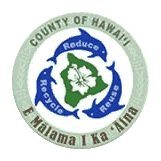Posted on December 15, 2014 - Uncategorized
According to the US EPA, the material most frequently encountered in MSW landfills is plain old paper, it sometimes accounts for more than 40 percent of a landfill’s contents. Newspapers alone can take up as much as 13 percent of the space in US landfills.
Biodegradable materials, including paper, do not easily decompose once they are disposed of in a landfill. Paper is many times more resistant to deterioration when compacted in a landfill than when it is in open contact with the atmosphere or your compost pile. A study by William Rathje, who runs the Garbage Project, has shown that, when excavated from a landfill, newspapers from the 1960s can be intact and readable.
Consider shredding your non-glossy paper and adding it to your compost pile. The ‘āina will thank you for it.
Posted on December 15, 2014 - Uncategorized
The processing facility is a combination of mechanical and manual sorting operations designed to produce the highest quality material streams at a manageable cost. Contaminants in the recyclables increase the costs of separating them at the processing facility, manual sorting and clogged machinery slows the processing of recyclables. Too many contaminants can render the end product unusable thus wasting resources. If the processor deems our collected materials as excessively contaminated they can reject the load and it will end up in a landfill. Better quality recyclables yield better prices and lowers the cost of the recycling to the County.
Do not put your recyclables in a plastic bag and dump the bag in the bin, this will only clog the machinery and may relegate the whole bagful to the rubbish bin.
It is important to remember that your recycled materials will be used to make new products. Quality matters and the better you follow the guidelines, the less sorting and contamination we will face at the drop-off center and the more money that can go back into the community to improve recycling.
Posted on December 15, 2014 - Uncategorized
As much as we would like to recycle everything we receive, it’s a matter of market demand. We cannot collect and process materials if there is no one to buy them economically. Similarly, if we include too much “junk” with our materials (such as shredded paper or plastic bags mixed in with the cardboard), we risk losing buyers and/or getting a lower price for our materials which will cost more in the end. Undesirable materials and contaminants are landfilled.
Posted on December 15, 2014 - Uncategorized
During a year, an average American uses thousands of single-use paper napkins – several each day. If everyone in the US used one less napkin a day, more than a billion pounds of napkins could be saved from landfills each year.
